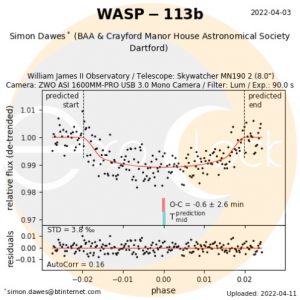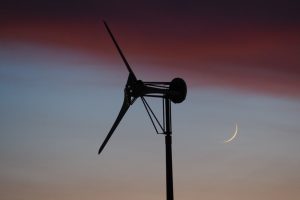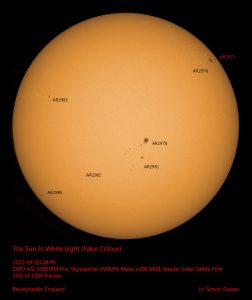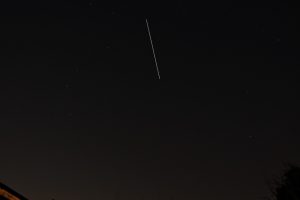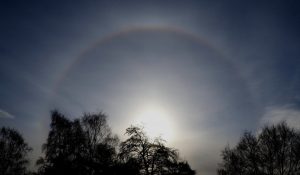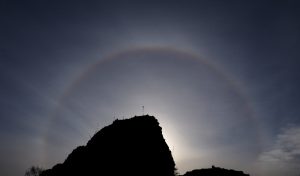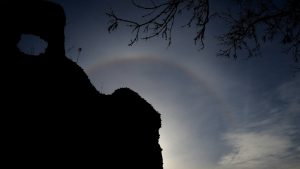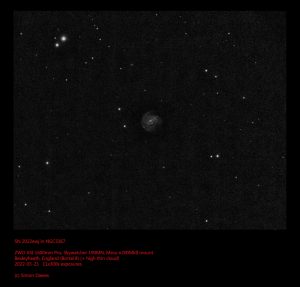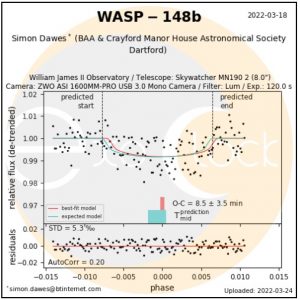Another for the ExoClock project......
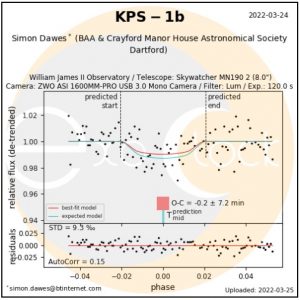
KPS-1b orbits a star similar to the Sun with a period of 40 hours.
The mass and size of the exoplanet KPS-1b are close to the characteristics of Jupiter, but it is located very close to its parent star so the temperature of the atmosphere KPS-1b is much higher than that of Jupiter.
The discovery was made by the prototype Kourovka Planet Search (KPS) project, which used wide-field CCD data gathered by amateur astronomers using readily available and relatively affordable equipment with astronomers from Belgium, USA, England, France, the Netherlands, Turkey, Portugal, Lithuania, Italy and Canada contributing.
The night Simon did the observations for KPS - 1b Simon said ''the transparency was low - when I left the society meeting you could see the water particles in the air in the headlamp and under the street lights, so I'm pleased I got anything at all!''
